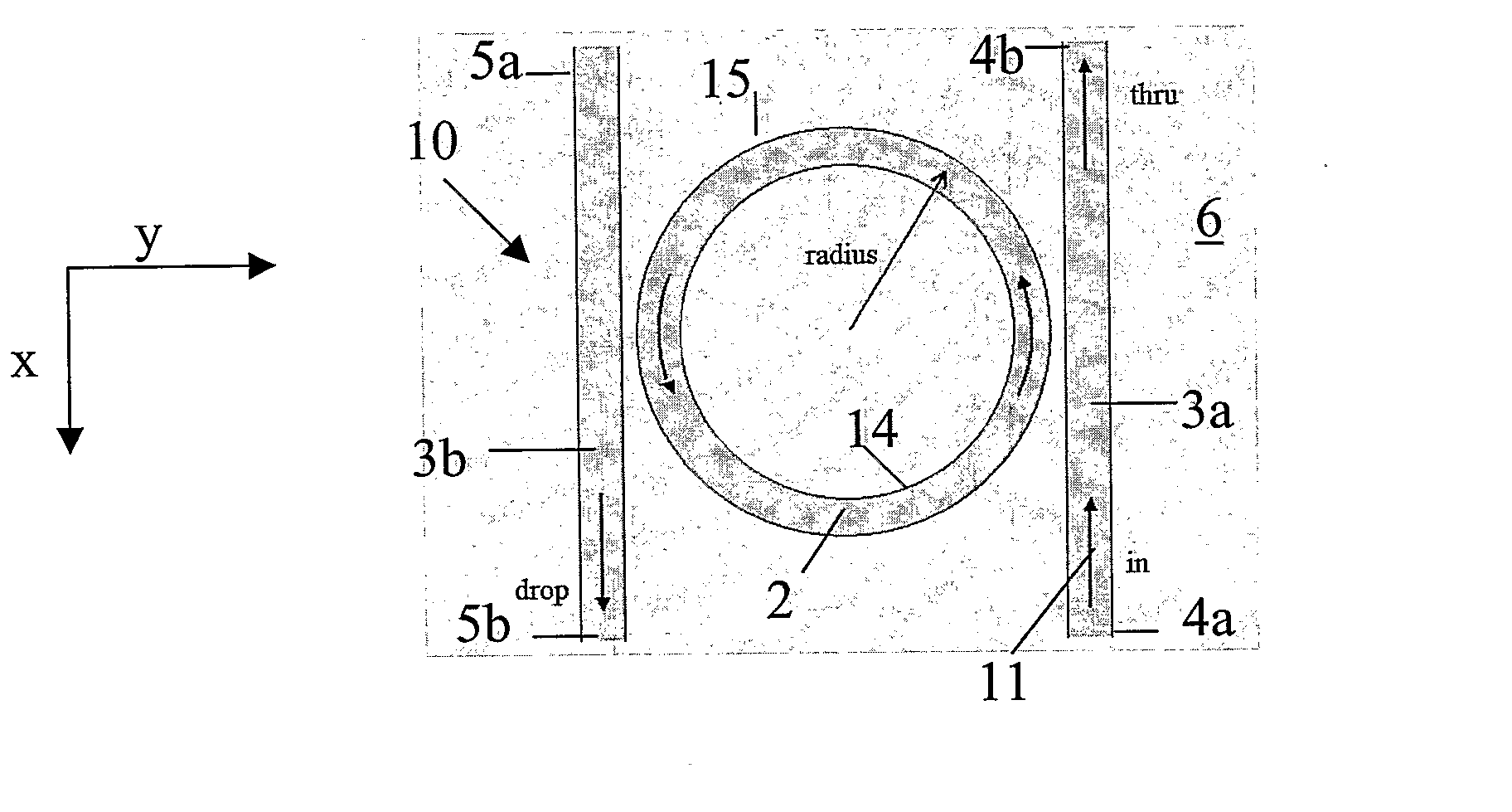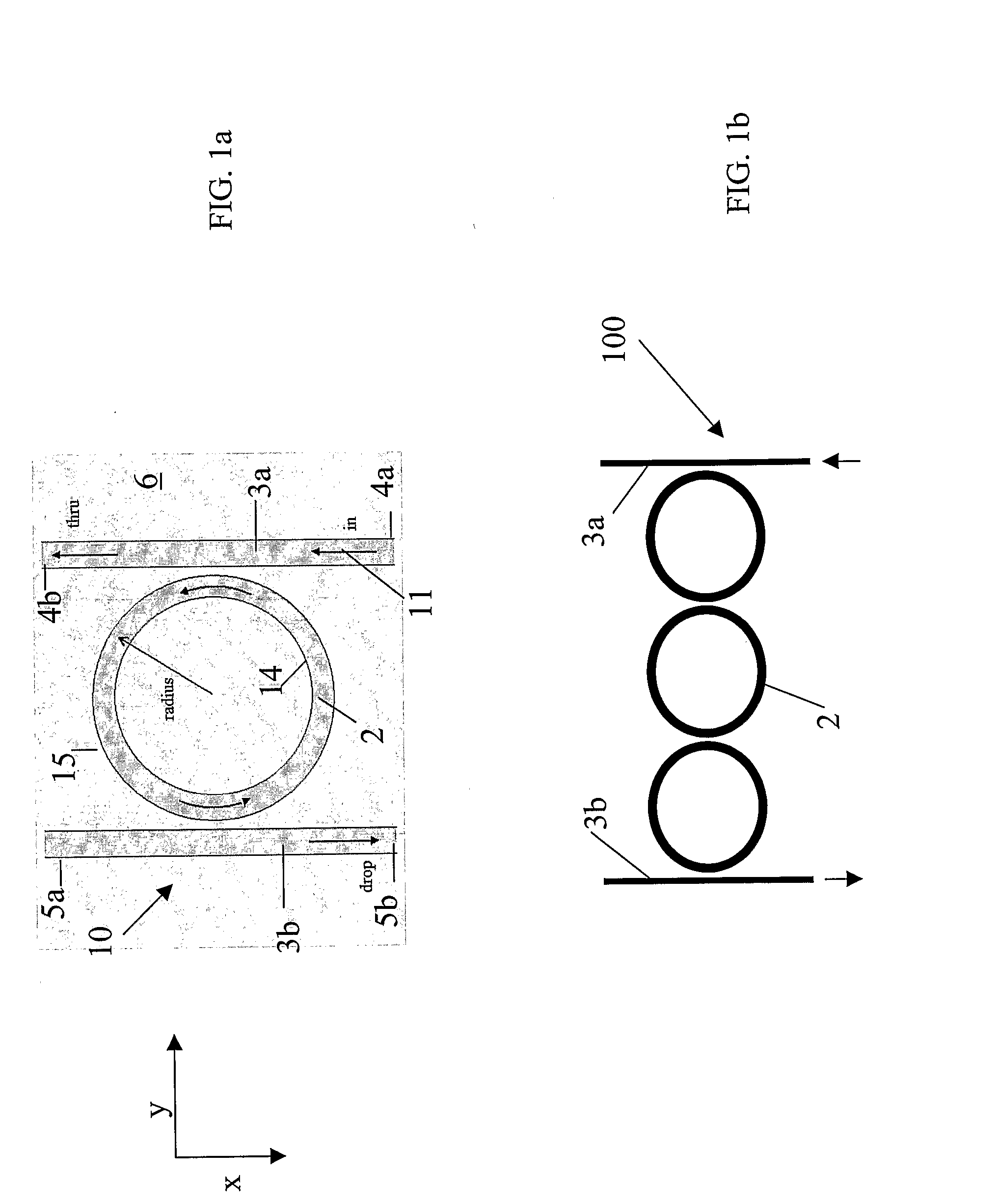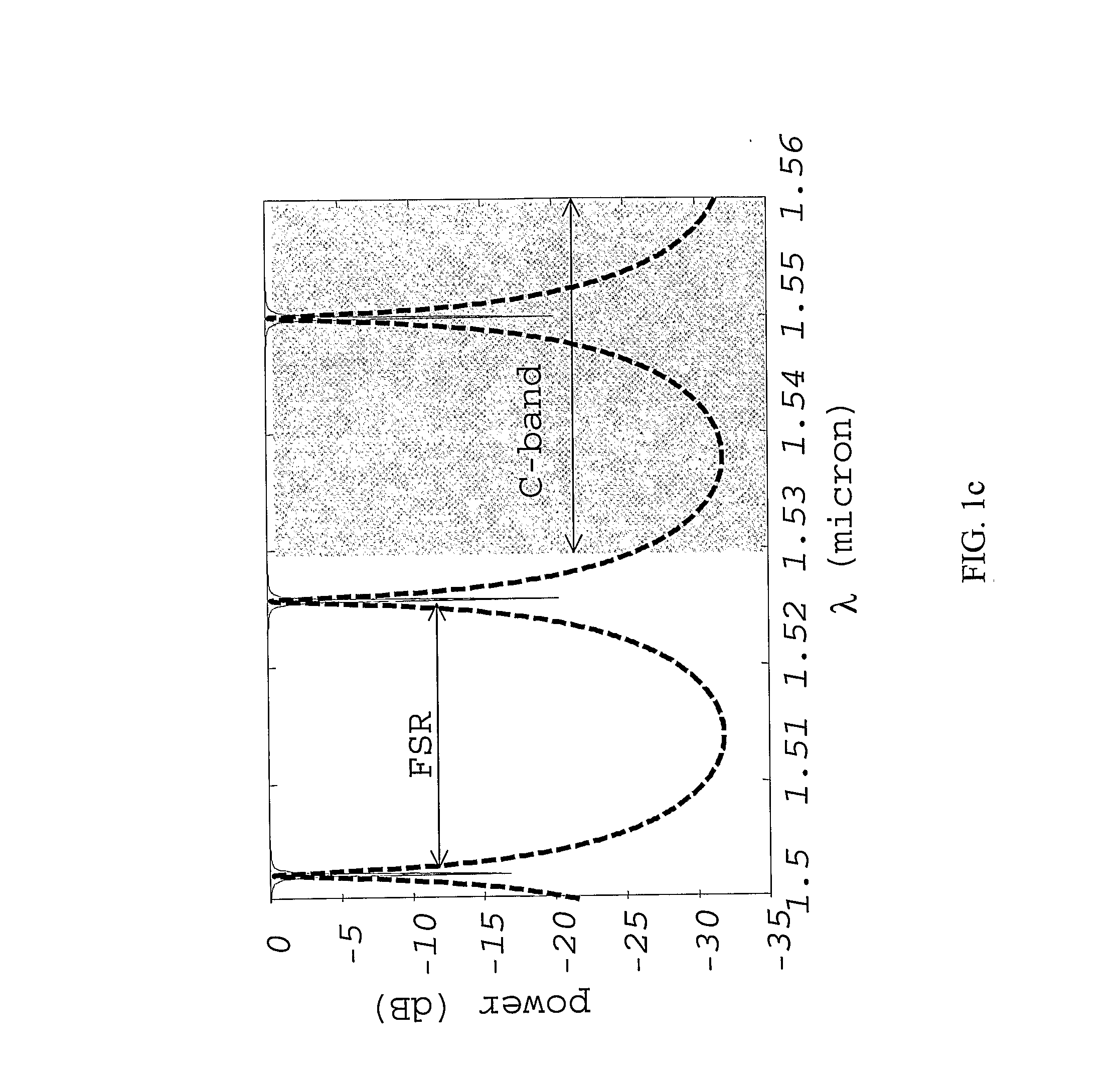Low loss microring resonator device
a micro-ring resonator and low-loss technology, applied in the field of low-loss micro-ring resonators, can solve the problems of increasing scattering losses, reducing the minimum size of resonators, and bending become a great loss source, so as to reduce propagation losses
- Summary
- Abstract
- Description
- Claims
- Application Information
AI Technical Summary
Benefits of technology
Problems solved by technology
Method used
Image
Examples
example 1
[0096] The resonator device 10 of FIG. 6 is studied. Resonator and bus waveguides 2,3a,3b lie on the same (X,Y) plane and the gap between the first or second waveguide 3a,3b and the resonator 2 is comprised between 100 and 150 nm. The substrate 6 is SiO2 having refractive index nr=1.45, while the resonator waveguide 2 and the bus waveguides 3a, 3b are realized in Si-rich Si3N4 having nb=2.2. The lateral cladding 21 is air (nlc=1) and the upper cladding 20 is a Sylgard™ 184 (nuc=1.4005 at room temperature) film of a thickness h of 3 μm. Refractive indices are taken at a wavelength of 1550 nm. The cross-section of the bus and resonant waveguides is a 1000×300 nm rectangle with 100 nm over-etch. The resonator waveguide 2 is a ring having radius of 7 μm.
[0097] Applicants have found that the round trip total losses α of this device 10 are equal to α=0.07 dB / round trip. If the Sylgard covers the entire device, i.e. upper and lateral cladding are made of Sylgard, the losses become α=0.55 ...
example 2
[0098] The device 10 is identical to the device of Example 1 except for the waveguides cross-section, which is in this case a rectangle of 1200×250 nm and has 200 nm over-etch. The losses are equal to α=0.1 dB / round trip or, equivalently, α=22.7 dB / cm. In FIGS. 13 and 14, the graphs of FIGS. 3 and 4 are reproduced and a circle is added in each graph showing the bending and scattering losses, respectively, of the studied device 10 of this example. From the figures, it is clear that the device 10 of the invention, with respect to the device 50 in which both upper and lateral cladding are air, but all other construction characteristics being the same, has much lower bending losses, while the scattering losses are almost unaffected.
example 3
[0099] The device 10, in which bus and resonator waveguides all lie on the same plane, has the following characteristics: [0100] substrate 6: SiO2; nr=1.45, [0101] resonant waveguide 2, bus waveguides 3a, 3b: Si-rich Si3N4; nb=2.2, [0102] lateral cladding 21: air; nlc=1 [0103] cross-section of all waveguides: 1000×300 nm rectangle with 100 nm over-etch
[0104] The propagation losses of this device have been computed for different resonator waveguide radii and different refractive indices of the upper cladding 20. The results are plotted in FIG. 8: the round-trip losses as a function of nuc are shown for a ring radius of 5 (FSR=36 nm), 6 (FSR=30 nm), 7 (FSR=26 nm) and 8 μm (FSR=23 nm).
[0105] For the desired applications, the maximum admissible total loss is equal to 0.1 dB / round trip (equal to 22.7 dB / cm). Therefore from FIG. 8, the useful range of the refractive index of an applicable upper cladding 20 can be derived. For example, for a ring having R2=7 μm, the useful nuc range is 1...
PUM
| Property | Measurement | Unit |
|---|---|---|
| wavelengths | aaaaa | aaaaa |
| radius | aaaaa | aaaaa |
| radius | aaaaa | aaaaa |
Abstract
Description
Claims
Application Information
 Login to View More
Login to View More - R&D
- Intellectual Property
- Life Sciences
- Materials
- Tech Scout
- Unparalleled Data Quality
- Higher Quality Content
- 60% Fewer Hallucinations
Browse by: Latest US Patents, China's latest patents, Technical Efficacy Thesaurus, Application Domain, Technology Topic, Popular Technical Reports.
© 2025 PatSnap. All rights reserved.Legal|Privacy policy|Modern Slavery Act Transparency Statement|Sitemap|About US| Contact US: help@patsnap.com



